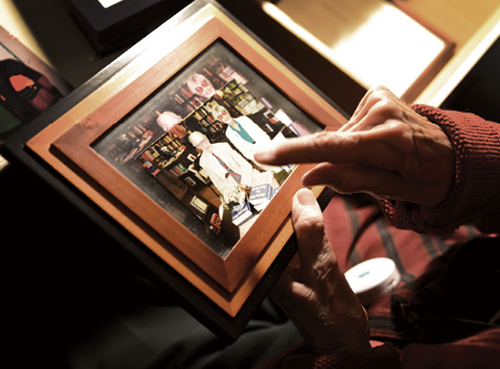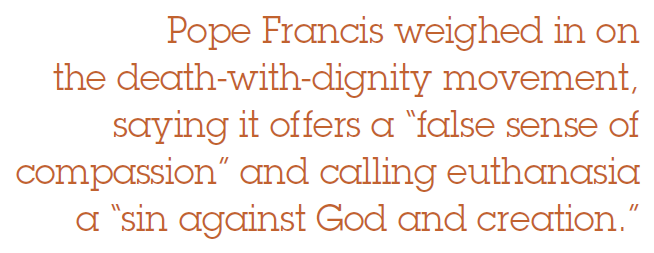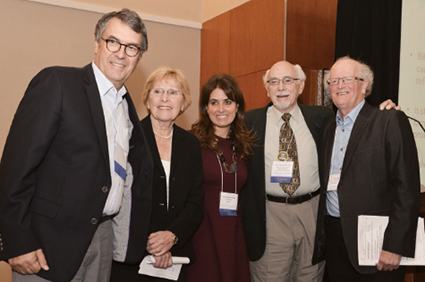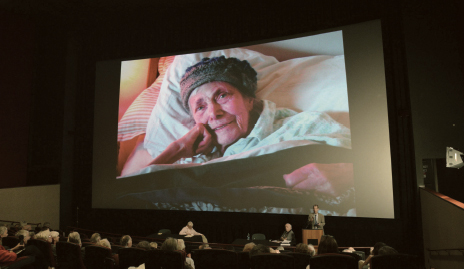Is Dying a Pro-Choice Issue? The Right-to-Die Movement Gains National Attention

“In a spirit of compassion for all, this manifesto proclaims that every competent adult has the incontestable right to humankind’s ultimate civil and personal liberty—the right to die in a manner and at a time of their own choosing. Whereas modern medicine has brought great benefits to humanity, it cannot entirely solve the pain and distress of the dying process. Each person deals with death in their individual way. Which way is determined by their health, their ethics, and personal living conditions.”
—Derek Humphry, co-founder of the Hemlock Society and author of Final Exit
HOW WE DIE is a question that concerns us all, especially as we age and face serious illness or the declining health of our loved ones. On November 1, 2014, twenty-nine-year-old Brittany Maynard ended her life surrounded by close friends and family. Her decision to end her life on her own terms has brought the issue to national attention and galvanized the right-to-die movement (also called “death with dignity”) in the United States.
Diagnosed last January with brain cancer, Maynard went through surgery only to find out the cancer had progressed to stage four and that she had only months to live. Knowing that the progression of the disease would cause untold pain and suffering to herself and to her loved ones witnessing it, Maynard and her husband made the decision to move to Oregon to take advantage of its Death with Dignity Act. Her controversial decision to end her life with lethal drugs prescribed by her physician, and to speak publicly about it, has catapulted the right-to-die movement into the collective consciousness and could lead to a watershed moment on the issue.
Outside the United States, aid-in-dying laws exist in the Netherlands, Belgium, Luxembourg, and Switzerland, with a groundbreaking law recently passed in Québec. In the United States physician-assisted death is currently legal in Oregon, Montana, Vermont, and Washington State. In New Mexico, a judge’s ruling last year legalizes physician-assisted dying, but that ruling only applies to one county and the decision is currently being appealed. And in New Jersey, on November 13—less than two weeks after Maynard’s death—the State Assembly voted 41-31 to pass the Aid in Dying for the Terminally Ill Act. The legislation still needs to pass the state senate, and New Jersey Governor Chris Christie has promised he’ll veto it if it does. Factor in Christie’s presidential ambitions and we may reach that watershed sooner than we thought.
THIS PAST September the Final Exit Network hosted a five-day World Federation of Right to Die Societies meeting in the heart of Chicago, with a focus on end-of-life issues such as dignity, control, and choice. It was their twentieth biennial conference and brought over 300 leaders, activists, and attendees from all over the world to share ideas on how to grow and strengthen the death-with-dignity movement. The federation was founded in 1980 (conferences were held in 1976 and 1978 before the group officially formed) and consists of fifty-two right-to-die organizations from twenty-four countries.
“The worldwide death-with-dignity movement is rapidly growing because increasing numbers of people believe that being able to control your own death is the ultimate human right,” said conference attendee Ed Gogol, a member of the American Humanist Association and the president of Hemlock of Illinois (an independent affiliate of the Final Exit Network). “Mentally competent adults who are suffering intolerably have a basic human right at the end of life to choose a peaceful, dignified, and pain-free death.”
Eighty-nine-year-old Lynn Lawson of Evanston, Illinois, and her husband Court, age ninety-four, certainly agree. They want to see a law enacted in their state that broadens the parameters of Oregon’s law to include nonterminal illnesses. An author, activist, and former professor, Lynn Lawson is currently dealing with an assortment of health issues: chronic obstructive pulmonary disease, peripheral neuropathy, macular degeneration, and glaucoma, all of which impair her ability to enjoy her favorite passions, including reading and writing.
“The world is shutting down for me and I can hardly keep up with things,” she stated in a recent interview in her Evanston home. “I can’t read the paper, I can’t watch television, and it’s hard to keep up with people. It is a loss of my faculties. I want to decide when and how I go.”
Court Lawson, also a former college professor, is in the final stages of emphysema and lives at home under hospice care. “Some days I just want to die but then I think of Lynn and our family and I can’t divorce myself from them,” he says. “Sometimes I feel like I’m not living; I’m just existing.”

Lynn Lawson points to a photograph of herself with her husband Court in healthier days. The Lawsons would like their home state of Illinois to adopt a law similar to Oregon’s Death with Dignity Act, which Brittany Maynard (above) took advantage of after learning she had terminal brain cancer. (Photo by Tone Stockenström)
The Lawsons have lived a rich life with university careers, activism, travel, writing, and raising two children. Now they want the right for themselves and others in Illinois to choose their final exit. “It’s about having peace of mind to know you have a choice,” said Lynn. She has already prepared her memorial service and has carefully placed photographs, texts, and letters for this purpose in a desk drawer in an upstairs bedroom. After a ride upstairs on her home chair lift, Lynn shares personal photographs from her energetic, active past, remnants of a vigorous life that stand in sharp contrast to her silver walker and the constant buzz of oxygen that aids Court’s breathing.
Lynn has also signed an advanced health directive in the event that she has a stroke due to high blood pressure. After seeing a close activist friend lose her ability to communicate with others, Lynn has elected to use VSED (voluntarily stopping eating and drinking) if this situation were to happen to her. “My main fear is that I would have a stroke that leaves me unable to communicate,” she explains. Incidentally, seventy-one people died in 2013 under the Oregon Death with Dignity Act, accounting for just 0.2 percent of all deaths in Oregon. Many Oregonians who have end-of-life prescriptions on hand say it gives them a sense of control and relief over the diseases ravaging their bodies.
LIKE OTHER Americans who are facing debilitating diseases that don’t fall in the terminally ill category, the Lawsons want options to shorten their lives on their own terms. Critics of aid-in-dying measures often point to a slippery slope whereby individuals will be pressured by others to end their lives or where people suffering from a mental illness will commit suicide rather than pursue treatment that might actually relieve their suffering. The death of beloved actor and comedian Robin Williams brought the latter issue to the national stage this past summer. The thrust of the public’s anguish was that Williams was successful in ending his life. Rather than express feelings of relief that he had ended his suffering, people questioned how his death could have been prevented.
 “Mental suffering is invisible to the human eye,” says thirty-four-year-old Kristy Martin, who attended the World Federation of Right-to-Die Societies conference in Chicago. Martin had a strict Catholic upbringing and was told at an early age that heaven was a place where she could go. She struggled with the contradictions of her religious education and her desire to be free of her own body. According to her religious parents, the idea of suicide was a sin and yet Martin’s mental suffering has been so potent that she likened the anguish she feels to “being a slave to your own body, much like a prison.” Martin attended the conference looking for options on aid in dying because she’s made the firm decision to decide how and when she will die, having her death on her own terms.
“Mental suffering is invisible to the human eye,” says thirty-four-year-old Kristy Martin, who attended the World Federation of Right-to-Die Societies conference in Chicago. Martin had a strict Catholic upbringing and was told at an early age that heaven was a place where she could go. She struggled with the contradictions of her religious education and her desire to be free of her own body. According to her religious parents, the idea of suicide was a sin and yet Martin’s mental suffering has been so potent that she likened the anguish she feels to “being a slave to your own body, much like a prison.” Martin attended the conference looking for options on aid in dying because she’s made the firm decision to decide how and when she will die, having her death on her own terms.
IN THE United States, it is generally accepted that medical intervention, including administering antidepressants, can alleviate suicidal tendencies, and so adults who are not deemed mentally competent cannot access aid in dying for any reason. In the
Netherlands, however, laws are more inclusive for psychiatric patients. The Royal Dutch Medical Association (KNMG) has published guidelines on assisted death for psychiatric patients as an addendum to those laid out in 1984. These guidelines point to cases where it is considered merciful for patients with serious psychiatric problems and no prospect of improvement to pursue death with dignity.
According to Dutch aid-in-dying advocate Margo Andriessen, forty-two patients were euthanized in the Netherlands in 2013. Of these forty-two, nine patients had long-lasting, unbearable mental suffering with no treatment alternative. End of Life clinics (“Stichting Levenseinde Kliniek”) are available to Dutch citizens and require anyone seeking their services to provide a legal euthanasia request. “Not all doctors are willing to do it,” says Andriessen.
In 1994 Boudewijn Chabot was the first psychiatrist to perform euthanasia for a psychiatric patient in the Netherlands, sparking a worldwide debate over the difference between mental illness and mental incompetence when making a decision to end life through assisted measures.

Speakers at the 20th biennial World Federation of Right to Die Societies meeting included (left to right) Jean Mercier, Laval University, Quebec; Hélène Bolduc, president of the Quebec Association for the Right To Die with Dignity; Quebec National Assembly Member Véronique Hivon; Dr. Richard MacDonald, senior medical advisor to the Final Exit Network; and Yvon Bureau, co-president of Collectif Mourir digne et libre. (Photo by Tone Stockenström)
“The most important issue, in my opinion, is that the patient is mentally competent to make the decision to end their own life,” says Dr. Richard MacDonald, senior medical director for the Final Exit Network. “If so, then they must show by medical records that their suffering has been prolonged and treatment has been accepted but has not been able to provide them with a quality of life that is worthwhile.” He concludes that “severe psychiatric illness does not necessarily indicate lack of competency for decision-making.”
The main focus of the Chicago meeting was on the current state of right-to-die laws in various countries, world views on the issue, and how each country is grappling with its complexities.
One of the keynote speakers was Véronique Hivon, the Minister of the National Assembly in Québec who had introduced the Act Respecting End of Life Care for her province. The act passed by an overwhelming 94 to 22 vote in June, making Québec the first province of Canada to pass such legislation. This groundbreaking law establishes a basic human right to compassionate care at the end of life, including continuous palliative sedation and medical aid in dying. “There was such a strong public will to see improvements in end-of-life care in Québec,” Hivon told the audience. “The whole society was behind it which gave incredible strength to the movement.”
The idea of dignity is central to the right-to-die movement. In a taped video welcoming attendees to the Chicago conference, Archbishop Emeritus of Cape Town Desmond Tutu declared himself in favor of assisted dying should he ever find himself terminally ill or in a situation of unbearable suffering. In a recent statement to the London Observer, Tutu had this to say about the death of his dear friend, Nelson Mandela: “What was done to Madiba [a nickname for Mandela] was disgraceful. There was that occasion when Madiba was televised with political leaders, President Jacob Zuma and Cyril Ramaphosa. You could see Madiba was not fully there. He did not speak. He was not connecting. My friend was no longer himself. It was an affront to Madiba’s dignity.” There is controversy still over whether Mandela was in a permanent vegetative state in the final months of his life when he was rolled out for photo opportunities with the press.

Sean Davison (at podium), who served months of house arrest for helping his terminally ill mother die in New Zealand, projects an image of her while presenting at the World Federation of Right to Die Societies meeting in Chicago. (Photo by Tone Stockenström)
“WITH DIGNITY“ is how South African professor, author, and activist Sean Davison wanted his terminally ill mother to die after she requested her son’s help as she lay suffering in New Zealand. Addressing the World Federation of Right-to-Die Societies in Chicago, Davison described as a “moment of joy” the realization that, at age eighty-five, his mother Patricia had died in her sleep after a long battle with terminal illness. However, the decision to aid his mother in dying with dignity garnered multiple threats on his life, a split in his family, and prosecution for attempted murder in New Zealand. (He was sentenced to five months of house arrest.) A professor at the University of the Western Cape, Davison recollected the events in his book, After We Said Goodbye: The Price of Helping My Mother Die, published in 2013. In the poignant account, Davison explores the most “fateful decision of his life” to assist his mother in her request to end her intolerable suffering. “We need a mind shift in South Africa about death with dignity,” he told the audience. “Many South Africans believe if you commit suicide you are a ghost that wanders the earth.”
Desmond Tutu’s enlightened support aside, opposition to aid in dying is often grounded in superstition or theology. In a plea to Brittany Maynard published by Religion News Service on October 15, Joni Eareckson Tada, a quadriplegic disability advocate and evangelical Christian, wrote that God alone has the right to determine when life should begin and end. “Three grams of phenobarbital will provide only a temporary reprieve and will only more quickly usher in an eternity separated from God, which would be ultimate and pointless suffering,” Tada said. Speaking to the Association of Italian Catholic Doctors in November, Pope Francis weighed in on the death-with-dignity movement, saying it offers a “false sense of compassion” and calling euthanasia a “sin against God and creation.”
Even so, support for assisted-death laws is growing worldwide. At issue is who can receive aid in dying, how they can receive it, and when they can receive it. Argentina’s Dignified Death law, which passed the legislature in 2012 by a vote of 55-0, marks a radical change in a country that is 76 percent Catholic. It gives the terminally ill and their families more control in end-of-life decisions and allows a patient who has intolerable pain from a terminal illness or has an incurable condition to refuse treatment. In cases where patients are unable to speak for themselves, the law allows relatives or legal representatives to help make the decision. Although the Catholic Church rejected the new legislation, 60 percent of Argentineans are now in favor of assisted dying, according to conference presenter Laura Belli of the National Council of Scientific and Technical Research in Argentina.
In Belgium, a recent amendment to the country’s 2002 euthanasia law allows a child of any age to receive assistance in dying, but only under strict conditions. The child must be terminally ill, close to death, and deemed to be suffering beyond any medical intervention. The child has to request euthanasia themselves and prove that they fully understand their choice. In an interview with Time magazine, Dr. Gerlant van Berlaer, a pediatrician who also works at University Hospital in Brussels, said he understands why the law provoked such a strong reaction everywhere. “I would be rather scared if it didn’t evoke emotional reactions: we’re talking about children.”
SO WHERE do humanists stand on the issue of aid in dying? According to Ed Gogol, “There are those who favor physicians as the gatekeepers to a hastened death like the Oregon-style law, which states that two physicians must concur that you can reasonably be expected to die within six months.” Ultimately, Gogol doesn’t think this law goes far enough. “A mentally competent adult, incurably ill and suffering intolerably should have the right to choose to hasten their death. It is ethically the highest form of compassion to help a person with intolerable suffering to exit this life.”
Final Exit’s Richard MacDonald points out that even when the law allows certain people to die, a physician-assisted death in a medical facility is not what patients want. “They want to die at home, with family and loved ones around,” he notes. As per the definition of humanism in this very publication, humanists who affirm “the dignity of each human being,” who support “liberty and opportunity consonant with social and planetary responsibility,” and who assert that “humanity must take responsibility for its own destiny” are likely to support many aspects of the issue. But what about when it concerns children? What about the mentally ill? What about the people directly affected by another’s death? These and other questions present a complex set of ethical issues on which humanists will have a range of opinions. At the very least, I would guess that a majority of humanists are open to discussing them, a challenge society still struggles with.
Enabling end-of-life discussions between patients and doctors is a difficult topic and one not formally taught in U.S. medical schools. Discussions between patients and family members can also be tough. Before Final Exit Network member Janet Conn lost her parents to pancreatic cancer she struggled to talk with them about end-of-life planning. “We didn’t know how to have a conversation with them.” Now she devotes her time in Minnesota to facilitating these important advanced care planning conversations with patients’ family members.
Although the right-to-die movement is receiving increased attention and support worldwide, it has many opponents in the medical field, the religious community, and from others concerned that the sick will be coerced into death, overriding a person’s right to choose their final exit. Ultimately the questions remain: Who decides how anyone exits the world and what constitutes quality of life?
Top Photo Courtesy www.TheBrittanyFund.org
